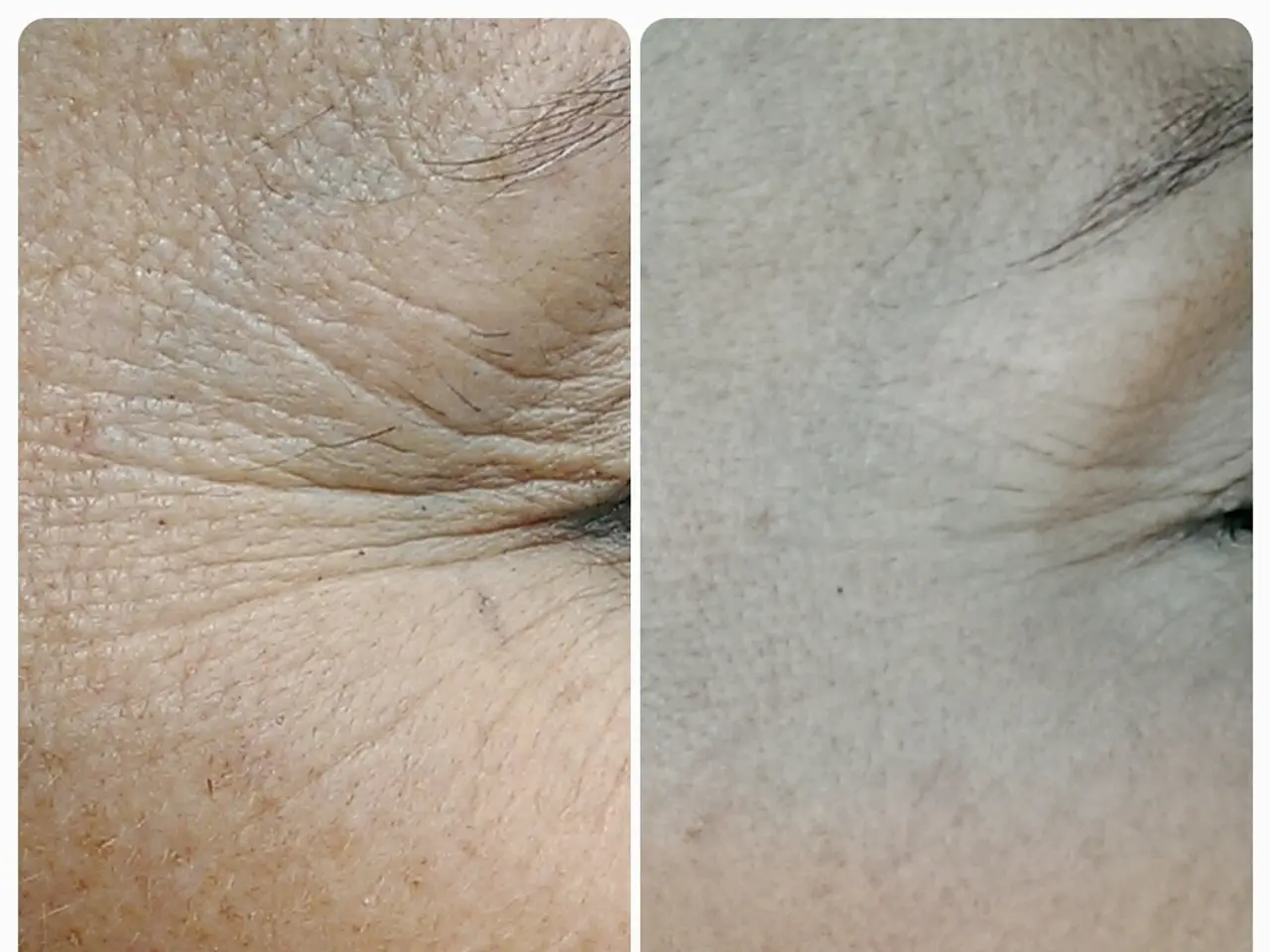Chemical treatments for brown spots: Outcomes, risks, expenses, and additional details
In the realm of skincare, chemical peels have emerged as a popular solution for various skin concerns, including freckles. These procedures, performed by dermatologists or plastic surgeons, involve applying a chemical solution to the skin to improve its appearance.
Chemical peels can help reduce the appearance of wrinkles, sunspot discolorations, and scars. For freckles, specific peels have shown positive outcomes.
For fair and sensitive skin, lactic acid or mandelic acid peels are often recommended. Lactic acid is gentle and hydrating, offering mild exfoliation that gradually lightens pigmentation like freckles. Mandelic acid peels, known for their low irritation potential, are suitable for sensitive skin types, including those with rosacea.
Oily and combination skin may benefit from glycolic acid or salicylic acid peels. Glycolic acid is a favorite for removing superficial pigmentation like freckles, while salicylic acid is known for its oil control and pore-clearing properties.
Trichloroacetic acid (TCA) peels, considered the “gold standard,” can treat freckles along with other pigmentation issues. They come in varying concentrations and are effective for all skin types, but require caution and pre-treatment for darker skin tones to prevent post-inflammatory hyperpigmentation.
The VI Peel is a medical-grade peel that exfoliates skin layers, effectively reducing freckles, age spots, and hyperpigmentation while improving texture and stimulating collagen.
Choosing the right peel depends on your skin type, tone, sensitivity, and presence of other skin concerns. Pre-treatment skin care with melanin inhibitors is often recommended, especially for darker skin tones or stronger peels like TCA, to prevent unwanted pigmentation changes.
Cosmetic laser treatments can also help with reducing the appearance of freckles. However, it's essential to consult with a dermatologist or plastic surgeon to determine the best treatment option for your unique skin concerns.
It's worth noting that chemical peels have associated risks, including the skin lightening too much, extra sensitivity to light, and health risks for people living with heart disease. During recovery, a person can expect redness or other skin discoloration, peeling, discomfort, crusting, and swelling.
The average cost of a chemical peel in the United States in 2020 was $519. Insurance does not typically cover the cost of chemical peels. A doctor may prescribe pain medications to help manage discomfort during recovery.
After the treatment, a person can return to work and usual activities within 2 weeks. Skin discoloration can last for several months after the treatment, but the results from a chemical peel can last for up to 10 years.
In conclusion, chemical peels offer a viable solution for reducing the appearance of freckles, with a variety of peel options available to suit different skin types and concerns. It's crucial to consult with a professional for guidance on the best treatment for your unique skin needs.
Skincare dermatology has proven that chemical peels can help manage various medical-conditions such as freckles, wrinkles, sunspot discolorations, and scars. The science behind these procedures involves applying chemical solutions to the skin to improve its appearance. For fair and sensitive skin, lactic acid or mandelic acid peels are often recommended due to their gentleness and ability to lighten pigmentation like freckles. On the other hand, oily and combination skin may benefit from glycolic acid or salicylic acid peels known for their different properties – glycolic acid for removing superficial pigmentation, and salicylic acid for oil control and pore-clearing. It's essential to adopt health-and-wellness practices like pre- treatment skin care with melanin inhibitors to attain the best results, especially for darker skin tones or stronger peels like TCA, to prevent unwanted pigmentation changes.




